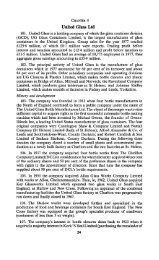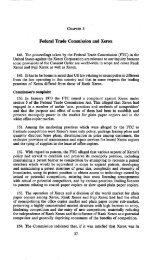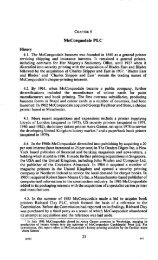3 The market for impulse ice cream [per] - Competition Commission
3 The market for impulse ice cream [per] - Competition Commission
3 The market for impulse ice cream [per] - Competition Commission
- No tags were found...
You also want an ePaper? Increase the reach of your titles
YUMPU automatically turns print PDFs into web optimized ePapers that Google loves.
3.9. <strong>The</strong> manufacture of <strong>ice</strong> <strong>cream</strong> in the UK is governed by <strong>The</strong> Ice Cream Regulations 1967 (made underthe Food and Drugs Act 1955) which stipulate that <strong>ice</strong> <strong>cream</strong> must contain 5 <strong>per</strong> cent fat and 7.5 <strong>per</strong> cent milksolids, other than fat. Dairy <strong>ice</strong> <strong>cream</strong> must contain a minimum of 5 <strong>per</strong> cent milk fat and a minimum of 7.5 <strong>per</strong>cent milk solids. <strong>The</strong> Milk Marketing Board also specifies that `<strong>ice</strong> <strong>cream</strong> made with dairy <strong>cream</strong>' must contain aminimum of 10 <strong>per</strong> cent dairy fat (56 grams <strong>per</strong> litre), of which half (28 grams) must be derived from double<strong>cream</strong>.3.10. Premium <strong>ice</strong> <strong>cream</strong> is the term describing a more expensive <strong>ice</strong> <strong>cream</strong> made from real dairy <strong>cream</strong> andmilk. <strong>The</strong> products also tend to be made with natural ingredients, eg real chocolate or fresh fruit. <strong>The</strong> term `su<strong>per</strong>premium' is also used to denote the top end of the premium <strong>market</strong>. <strong>The</strong> products have a very high dairy fatcontent and a low air content as is typical of <strong>ice</strong> <strong>cream</strong> made in the USA. Premium <strong>ice</strong> <strong>cream</strong> has to containbetween 10 and 14 <strong>per</strong> cent dairy fat with an overrun of between 80 and 100 <strong>per</strong> cent. Su<strong>per</strong> premium <strong>ice</strong> <strong>cream</strong>has a dairy fat content above 14 <strong>per</strong> cent and overrun below 80 <strong>per</strong> cent.3.11. Once the required texture has been achieved the mixture is moulded or extruded into the relevant shapeinvolving both freezing and hardening stages. After manufacture <strong>ice</strong> <strong>cream</strong> is put into cold storage prior todistribution.3.12. <strong>The</strong> complexity of product <strong>for</strong>mation differs substantially according to the product. For example, water<strong>ice</strong>s (which do not require secondary freezing), scoop products and frozen yoghurts involve relativelystraight<strong>for</strong>ward processes. However, the recent introduction of many sophisticated <strong>impulse</strong> products requiresintegrated flexible high-speed lines which <strong>per</strong>mit a number of processes to be undertaken simultaneously andspeedily, and cost-effectively.Features of the <strong>impulse</strong> <strong>ice</strong> <strong>cream</strong> <strong>market</strong>3.13. Ice <strong>cream</strong> must be kept at a low tem<strong>per</strong>ature at all stages of production and in the distribution fromfactory to final consumer. To supply the national <strong>market</strong>, manufacturers need either their own distributivenetwork, including cold stores, depots and specialized refrigerated vehicles, or access to a distributor with suchfacilities. Thus <strong>ice</strong> <strong>cream</strong> reaches the point of sale either by a manufacturer supplying the retailer directly, orthrough specialized distributors it appoints, or through frozen food wholesalers. Paragraphs 3.56 to 3.59 describehow the major manufacturers differ in respect of their distribution systems.3.14. Similarly, at the retail level, the sale of <strong>impulse</strong> <strong>ice</strong> <strong>cream</strong> requires a freezer cabinet. Retailers aim tokeep this cabinet fully stocked to take advantage of sale opportunities which fluctuate with the weather. <strong>The</strong>pract<strong>ice</strong> of some manufacturers supplying freezer cabinets to retailers on terms which prevent the retailer fromusing the cabinet to stock <strong>ice</strong> <strong>cream</strong> supplied by another manufacturer is central to this inquiry.3.15. A further feature of the <strong>impulse</strong> <strong>ice</strong> <strong>cream</strong> trade is its highly seasonal nature. BEW told us that between1990 and 1992 over 60 <strong>per</strong> cent of total annual sales (measured by portion and excluding multi-packs) took placein the four months from May to August. This contrasted with sales of <strong>ice</strong> <strong>cream</strong> in the take-home sector of the<strong>market</strong> which were no more than 40 <strong>per</strong> cent of total annual sales in these same months. Furthermore the rangebetween the peak and trough of <strong>impulse</strong> sales is much greater than <strong>for</strong> other <strong>ice</strong> <strong>cream</strong> products. <strong>The</strong> effect ofweather on sales gives rise to particular problems in planning production and distribution. Stocking in winter isnot a solution to the fluctuations in consumption because the quality of many <strong>impulse</strong> items is impaired by longtermstorage. It is there<strong>for</strong>e inevitable that any manufacturer seeking to meet peak demand will have a significantdegree of spare capacity at other times.3.16. A feature of the <strong>impulse</strong> sector of the <strong>ice</strong> <strong>cream</strong> <strong>market</strong> is the fact that it continues to be served mainlyby products branded with the names of the major manufacturers and, more recently, by individually brandedproducts. In other words, the development of distributors' own-label products has been much less marked in the<strong>impulse</strong> sector than in other parts of the <strong>market</strong>. CTNs do not enjoy brand franchises comparable to the multiplegrocery chains. As a result the share of the <strong>impulse</strong> <strong>market</strong> accounted <strong>for</strong> by retailers' own brands is insignificantthough some of the su<strong>per</strong><strong>market</strong> chains offer multi-packs of their own brands of <strong>impulse</strong> <strong>ice</strong> <strong>cream</strong> and (seeTable 3.2) enjoy substantial sales. In the take-home <strong>market</strong> retailer's own label accounts <strong>for</strong> about 45 <strong>per</strong> cent ofsales by value.17


![3 The market for impulse ice cream [per] - Competition Commission](https://img.yumpu.com/41909865/4/500x640/3-the-market-for-impulse-ice-cream-per-competition-commission.jpg)

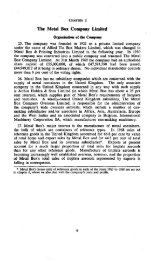

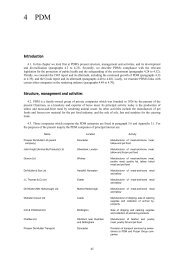
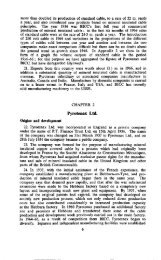
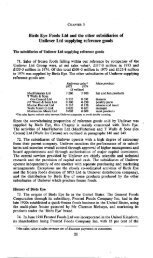
![Ch 3 UK market for car parts [per] - Competition Commission](https://img.yumpu.com/33043800/1/184x260/ch-3-uk-market-for-car-parts-per-competition-commission.jpg?quality=85)


